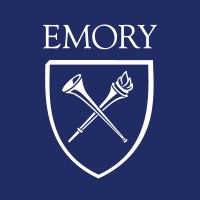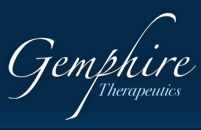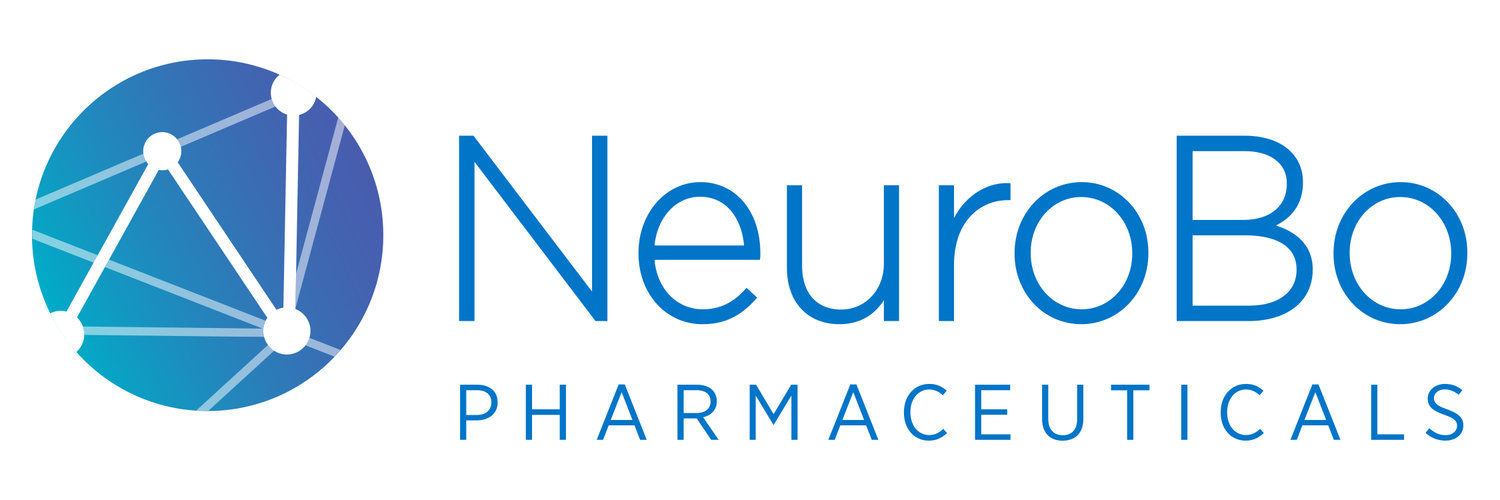预约演示
更新于:2025-05-07
CCR5 x PPAR x CCR2
更新于:2025-05-07
关联
1
项与 CCR5 x PPAR x CCR2 相关的药物作用机制 CCR2拮抗剂 [+2] |
最高研发阶段临床2期 |
首次获批国家/地区- |
首次获批日期1800-01-20 |
13
项与 CCR5 x PPAR x CCR2 相关的临床试验NCT03436420
Gemcabene for the Treatment of Pediatric NAFLD: A Phase 2a Study
This is a multicenter, prospective, open-label, Phase 2, proof of concept study to test preliminary efficacy and safety of gemcabene in children with established nonalcoholic fatty liver disease (NAFLD) incompletely treated by lifestyle changes. The hypothesis of the study is that 300 mg of gemcabene once a day for 12 weeks will reduce alanine aminotransferase (ALT), hepatic steatosis, dyslipidemia and down regulate de novo lipogenesis in children with NAFLD.
开始日期2018-03-29 |
申办/合作机构  Emory University Emory University [+1] |
NCT03508687
An Investigator-Initiated Open-Label, Randomized Study of Gemcabene in Adults With Familial Partial Lipodystrophy Disease (FPLD)
The overall objective of this study is to assess the efficacy and safety of two dosing regimens of gemcabene (300 mg once daily for 24 weeks or 300 mg daily for 12 weeks followed by 600 mg daily for 12 weeks) in up to eight patients with Familial Partial Lipodystrophy with high triglycerides and Non-Alcoholic Fatty Liver Disease. The study will consist of a six week Wash Out Period, up to a 28 day Screening Period, a 24 week Treatment Period, and a follow-on safety assessment four weeks post final dose. Study participation will last approximately 4 months and includes at least 9 study visits, and can be as many as 11 study visits.
开始日期2018-03-13 |
申办/合作机构 |
NCT02944383
A 12-Week, Phase 2 Randomized, Double-Blind, Placebo-Controlled Study to Assess the Efficacy Safety and Tolerability of Gemcabene in Subjects With Severe Hypertriglyceridemia (INDIGO-1)
A 12-Week, Phase 2 Randomized, Double-Blind, Placebo-Controlled Study to Assess the Efficacy Safety and Tolerability of Gemcabene in Subjects with Severe Hypertriglyceridemia (INDIGO-1)
开始日期2016-12-01 |
申办/合作机构 |
100 项与 CCR5 x PPAR x CCR2 相关的临床结果
登录后查看更多信息
100 项与 CCR5 x PPAR x CCR2 相关的转化医学
登录后查看更多信息
0 项与 CCR5 x PPAR x CCR2 相关的专利(医药)
登录后查看更多信息
5
项与 CCR5 x PPAR x CCR2 相关的文献(医药)2023-01-01·Biochimica et Biophysica Acta (BBA) - Molecular Basis of Disease
Myeloid- and hepatocyte-specific deletion of group VIA calcium-independent phospholipase A2 leads to dichotomous opposing phenotypes during MCD diet-induced NASH
Article
作者: Merle, Uta ; Chamulitrat, Walee ; Tuma-Kellner, Sabine ; Chunglok, Warangkana ; Jansakun, Chutima ; Staffer, Simone ; Muckenthaler, Martina ; Altamura, Sandro
2019-01-02·Expert Opinion on Pharmacotherapy3区 · 医学
Present and emerging pharmacotherapies for non-alcoholic steatohepatitis in adults
3区 · 医学
Review
作者: Saito, Satoru ; Imajo, Kento ; Ogawa, Yuji ; Honda, Yasushi ; Nakajima, Atsushi ; Kessoku, Takaomi ; Kobayashi, Takashi ; Yoneda, Masato
2018-11-02·Expert Review of Gastroenterology & Hepatology3区 · 医学
An update on the recent advances in antifibrotic therapy
3区 · 医学
Review
作者: Weiskirchen, Ralf ; Tacke, Frank
6
项与 CCR5 x PPAR x CCR2 相关的新闻(医药)2024-10-28
·药智网
继今年3月,全球首款MASH新药——Resmetirom获FDA批准用于治疗伴有肝纤维化的成人MASH患者,填补了MASH药物的空白状态后,近段时间以来,国内MASH领域的“新药曝光度”有目共睹的在增加。
10月15日,微芯生物宣布,其研发的西格列他钠治疗非酒精性脂肪性肝炎(NASH)/代谢相关性脂肪性肝炎(MASH)的2期临床研究(CGZ203试验)摘要入选美国肝病研究学会年会(AASLD 2024),11月17日以口头报告形式公布。
10月18日,中国国家药监局药品审评中心(CDE)官网公示,康弘药业1类THR-β新药KH629片获得临床试验默示许可,拟开发用于治疗成人非酒精性脂肪性肝炎。
为何沉寂40余年的MASH新药研究,短时间内俨然成为“流量”的代名词,成为众多药企争相入局的潜力市场,其背后又是怎样的底层逻辑使然?
患病率高涨
MASH是临床需求愈发迫切
其实,与大多数肝脏慢性病不同,近年来非酒精性脂肪性肝病(NAFLD)的患病率不降反增,现阶段已取代乙肝成为我国最常见的慢性肝病。
资料显示,中国成年人中NAFLD患病率高达29.2%,10年内整体增长10%,中国MASH患病率约为2.4%~6.1%,我国NAFLD/MASH患者疾病负担极其沉重。据弗若斯特沙利文报告预计, 2030 年全球 MASH 患病人数将达到 4.9 亿人,全球MASH药物市场将达到 322 亿美元。
作为NAFLD中最严重的发展阶段,原理上MASH是一种与代谢紊乱相关的肝脏疾病,其特征是肝脏中脂肪的异常积累,伴随着炎症和肝细胞损伤,早年间被称为非酒精性脂肪性肝炎(NASH)。
40余年的相关研究下,人们对MASH的发病机制仍尚未完全明确,目前认为其乃是一种代谢应激性肝损伤,与多种因素相关,复杂的级联反应下的肝细胞损伤机制有以下几种,主要包括胰岛素抵抗、氧化应激、炎症反应和脂质代谢异常等多个环节。
在临床表现方面,MASH通常情况下起病隐匿且缓慢,且通常无症状,多于常规检查过程中无意发现,并且由于MASH通常情况下难以自发缓解,在早期无干预的情况下进展为肝纤维化的风险很高,大约有15%的患者会发展为肝硬化、肝衰竭和肝细胞癌。
临床药物缺乏
MASH传统治疗局限性大
在Resmetirom获FDA批准上市之前,全球尚无治疗 NAFLD/NASH 的靶向性药物,而由于MASH与肥胖、2 型糖尿病、高血压、血脂紊乱等疾病的密切相关性,目前普遍认为控制这些疾病可有效改善 NAFLD/NASH的代谢状态,从而延缓疾病进展。
因此,NAFLD以及MASH的治疗基础仍是生活方式的干预和饮食方案的优化,生活习惯的改善,尤其饮食的控制及锻炼减重等可减少肝脏脂肪沉积,有利于改善 MASH 的生化指标和肝组织学病变,相关研究显示,体重减轻 3% 即可改善 NAFLD患者脂肪肝病情程度,减重 7% 可改善肝脏炎症等组 织学指标,减重 10% 可逆转肝纤维化水平。
而在药物治疗方面,临床上主要针对抗胰岛素抵抗、抗氧化应激、降血脂、促进脂质代谢及保护肝细胞膜等对MASH进行治疗,如二甲双胍、维生素 E、熊去氧胆酸、FXR激动剂奥贝胆酸、肝损伤治疗药物等保肝药物的使用。
但同时,上述药物治疗方式的局限性也很大,一者药物的治疗剂量、有效性及安全性均尚不明确,有待进一步研究;二者,如奥贝胆酸等FXR激动剂的不良反应也极大限制了其在MASH领域的应用。
故现阶段的MASH临床治疗上,迫切需要一种副作用低、能逆转肝纤维化、患者顺应性佳的创新疗法。
四大方向
推动MASH机制逐渐清晰
就目前而言,通过对MASH的发病机制研究,目前已有多款靶点给予了MASH有效干预,是目前乃至未来MASH治疗的主要方向。从类型上来看主要分为代谢、消化、抗炎、抗纤维化四种方向:
代谢类:改善胰岛素敏感性、抑制脂肪生成各种酶、促进线粒体摄取脂肪酸等。
消化类:调控肝肠轴的循环、改善胆汁酸的循环与信号传导、改善肠道菌群的平衡等。
抗炎类:抑制炎症细胞聚集、阻断炎性信号传导、降低氧化作用和内质网应激反应、防止肝细胞凋亡等。
抗纤维化:针对肝脏中的星形细胞、减轻肝脏中胶原蛋白的沉积、增强纤维分解等。
而在这四种类型药物之下,又可以细分出不同的靶点选择,各靶点方向之下又存在不同的技术优势与产品差异。
数据来源:公开数据整理(点击查看大图)
据不完全统计,全球现有MASH在研疗法已突破350款。其中代谢类与消化类的数量最多,而前者主要机制集中于肝内,在逆转纤维化方面具有优势,而后者则是从肝外机制着手,在降低肝脏脂肪积累与纤维化进展方面优势明显,两者机制各有优劣,未来大概率会是协同合作的关系。
临床阶段方面,虽绝大多数创新疗法均集中在临床前阶段,但跨入临床阶段的产品依旧不少,其中以临床II期管线数量最多,共计108款;而进入临床III期产品则也有18款之多。
表1.MASH临床III期管线
药品名称
靶点
适应症最高阶段
原研单位
利莫纳班 rimonabant
CB1
临床Ⅲ期
赛诺菲
依碳酸瑞格列净 remogliflozin etabonate
SLC5A2
临床Ⅲ期
BHV Pharma Inc;格兰马克制药有限公司
沙格列扎镁 aroglitazar magnesium
INS
临床Ⅲ期
Zydus Lifesciences Ltd
司美格鲁肽 semaglutide
GLP-1R
临床Ⅲ期
丹麦诺和诺德公司
腺苷蛋氨酸 ademetionine
Transferase
临床Ⅲ期
雅培制药
芦比前列酮 lubiprostone
CFTR;ClC-2;PGE1
临床Ⅲ期
Sucampo Pharma LLC
佩玛贝特 pemafibrate
PPAR-alpha
临床Ⅲ期
Kowa Co Ltd
塞拉德帕 seladelpar
PPAR-delta
临床Ⅲ期
CymaBay Therapeutics Inc;强生创新制药
aramchol
SCD1
临床Ⅲ期
Galmed Pharmaceuticals Ltd
survodutide
GLP-1R;GCGR
临床Ⅲ期
Zealand Pharma A/S;勃林格殷格翰
FXR314
NR1H4
临床Ⅲ期
Organovo Holdings inc
拉尼兰诺 lanifibranor
PPAR-alpha;PPAR-delta;PPAR-gamma
临床Ⅲ期
Inventiva
可妥度肽 cotadutide
GLP-1;GCGR
临床Ⅲ期
阿斯利康
瑟隆舍替selonsertib
MAP3K5
临床Ⅲ期
美国吉利德科学公司
塞尼韦洛 cenicriviroc
CCR2;CCR5
临床Ⅲ期
Tobira Therapeutics Inc;武田药品工业株式会社
ENB-106
/
临床Ⅲ期
上海轶诺药业有限公司
依鲁西夫明 efruxifermin
FGF21
临床Ⅲ期
安进公司
norucholic acid
/
临床Ⅲ期
德国霍克大药厂
数据来源:药智数据
三大靶点
引领MASH新药加速落地
就MASH在研药物靶点分布上而言,glp-1、FXR、THR-β、FGF19/21与PPAR是现阶段MASH最主要的在研药物类型。
数据来源:药智数据
从数量上来看,FXR激动剂、GLP1在研发热度上远超其他靶点,其在研数量也最多,目前均有超过30款相关疗法布局;其次是THR-β、FGF19/21与PPAR,分别有19、18与13款新药布局;其余靶点数量则相对较少,其临床阶段也相对靠后。
从趋势上来看,FXR激动剂虽然是MASH领域的老牌靶点之一,但由于靶点特殊作用机制,其在副作用上的局限性太大,直接影响了其在临床上的应用潜力。至少就现在而言,反而是glp-1与THR-β两种机制的MASH新药更受关注,未来也更容易占据头牌。
数据来源:药智数据
GLP-1
由于原理上GLP-1类似物能够有效改善糖脂代谢异常,因此GLP-1受体激动剂在糖尿病与减重适应症外,也被视为潜在的MASH治疗药物。
表2.GLP-1应用于MASH的创新疗法
药品名称
靶点
原研单位
适应症最高阶段
司美格鲁肽 semaglutide
GLP-1R
丹麦诺和诺德公司
临床Ⅲ期
survodutide
GLP-1R;GCGR
Zealand Pharma A/S;勃林格殷格翰
临床Ⅲ期
可妥度肽 cotadutide
GLP-1;GCGR
阿斯利康
临床Ⅲ期
替尔泊肽 tirzepatide
GIPR;GLP-1R
礼来制药
临床Ⅱ期
RAY-1225
GLP-1;GIP
广东众生睿创生物科技有限公司
临床Ⅱ期
HEC-88473
FGF21;GLP-1R
东莞市东阳光生物药研发有限公司
临床Ⅱ期
派维度肽 pemvidutide
GLP-1R;GCGR
Altor BioScience Corp合作:Altimmune Inc
临床Ⅱ期
尤曲格鲁肽 utreglutide
GLP-1R
印度太阳药业有限公司
临床Ⅱ期
巴度肽 bamadutide
GLP-1R;GCGR
赛诺菲
临床Ⅱ期
依福培肽 efocipegtrutide
GIPR;GLP-1R;GCGR
韩美药品株式会社
临床Ⅱ期
数据来源:药智数据
截止目前,随着人们对 GLP-1 的焦点由减肥向在抗 MASH转变之下,已有超30种GLP-1药物正在研究其治疗MASH的潜力,临床上推进较快的产品不少,较出名的产品有诺和诺德的司美格鲁肽、勃林格殷格翰的survodutide、阿斯利康的cotadutide、礼来制药的tirzepatide。
其中,Semaglutide与替尔泊肽作为GLP-1两大重磅产品,在关于MASH的治疗研究中均显示出减少肝脏脂肪积累、降低炎症水平的潜力,极大地振奋了行业对GLP-1作用于MASH的信心。
但与此同时,GLP-1在治疗MASH上的局限性也逐渐体现,即虽然在减少肝脏脂肪积累和纤维化方面的效果显著,但对逆转肝脏纤维化上却缺乏足够、全面、多维度的有效证据。这就导致GLP-1疗法单药治疗既无法完全满足现有的临床需求,也很难与其他疗法拉开差距。
对此,有关人士表示,GLP-1未来要想在MASH领域站稳脚跟,要么就逆转纤维化做出更多差异化成果,要么依靠肝外机制改善代谢紊乱的特点,与众多肝内机制的MASH疗法形成联动与互补,以协同策略解决MASH的临床需求。
Fxr(NR1H4)
作为曾经治疗MASH最重要的靶点,也是MASH早期阶段最主要的在研药物形式,FXR作为一种肠肝调节因子,不仅参与胆汁酸信号传导,调控胆汁酸合成和转运,还可以调节葡萄糖稳态、脂质和胆固醇代谢等其他生理功能以及抑制炎症,在MASH治疗上,目前已显示出一定的治疗效果。
截止目前,除已经宣布终止MASH适应症开发的奥贝胆酸外,领域内仍有超过30款Fxr激动剂涉及MASH适应症,其中Organovo的FXR314已进入了临床III期,是现阶段推进最快的Fxr激动剂;之后,还有10余款管线进入了临床II期,较受期待的有吉利德的cilofexor、诺华制药的nidufexor、东阳光药业HEC96719等。
表3.MASH中Fxr激动剂创新疗法
药品名称
靶点
原研单位
适应症最高阶段
奥贝胆酸 obeticholic acid
NR1H4
Intercept Pharmaceuticals Inc
注册申请
FXR314
NR1H4
Organovo Holdings inc
临床Ⅲ期
昔洛法克索 cilofexor
NR1H4
Phenex Pharmaceuticals AG;美国吉利德科学公司
临床Ⅱ期
尼度法克索 nidufexor
NR1H4
诺华制药
临床Ⅱ期
HEC96719
NR1H4
广东东阳光药业股份有限公司
临床Ⅱ期
卓匹非索 tropifexor
NR1H4
诺华制药
临床Ⅱ期
CS-0159
NR1H4
Van Andel Institute;中国科学院上海药物研究所;凯思凯迪(上海)医药科技有限公司
临床Ⅱ期
EDP-305
NR1H4
Enanta Pharmaceuticals Inc
临床Ⅱ期
TERN-101
NR1H4
上海拓臻生物科技有限公司;礼来制药
临床Ⅱ期
MET-642
NR1H4
Metacrine Inc
临床Ⅱ期
MET-409
NR1H4
Metacrine Inc
临床Ⅱ期
HPG1860
NR1H4
雅创医药技术(上海)有限公司
临床Ⅱ期
EYP-001
NR1H4
Poxel SA
临床Ⅱ期
数据来源:药智数据
而与此同时,虽然近年来Fxr激动剂领域用于MASH治疗的研究开发正在进入快速发展期,但临床获益有限,副作用严重等局限性也制约了其在临床上应用,最显著的例子就是奥贝胆酸,其2015年获FDA突破性疗法资格认定,是全球第一个进入临床3期的MASH候选产品,但最终仍因获益不确定性、副作用较大而折戟,经历多次被FDA否决后,最终无奈宣布终止其用于MASH领域的开发。
因此,对于Fxr激动剂整体而言,在保证创新疗法的有效性,研究机构未来更大的精力或将集中于创新疗法的不良反应的减少与安全性的提高上。
THR-β
THR-β是一种核激素受体,其主要在肝脏中高表达,能够调节脂代谢,降低低密度脂蛋白胆固醇(LDL-C)、甘油三酯和致动脉粥样硬化性脂蛋白,因此成为理论上MASH最具潜力的治疗靶点。
此外,THR-β还可以通过促进脂肪酸的分解和刺激线粒体的生物发生来减少脂肪毒性并改善肝功能,进而减少肝脏脂肪。这也是为何THR-β激动剂会具备调控多种肝脏代谢通路来治疗MASH的潜力的原因。其在MASH上的主要作用有以下5点:
调控脂肪合成
调控脂肪酸氧化作用
调控胆固醇代谢
调控线粒体功能
通过抑制TGF-β信号通路发挥抗炎和抗纤维化作用
2024年3月,Resmetirom成为首款获FDA批准上市的治疗代谢功能障碍相关脂肪性肝炎(MASH)的新药,也是THR-β激动剂领域首款撞线的产品。
表4.MASH中THR-β激动剂创新疗法
药品名称
靶点
原研单位
适应症最高阶段
瑞司美替罗 resmetirom
THRB
Madrigal Pharmaceuticals Inc;罗氏制药
批准上市
VK-2809
THRB
Ligand Pharmaceuticals Inc;Viking Therapeutics Inc
临床Ⅱ期
ASC41
THRB
歌礼制药有限公司;甘莱制药有限公司
临床Ⅱ期
TERN-501
THRB
上海拓臻生物科技有限公司
临床Ⅱ期
HSK-31679
THRB
海思科医药集团股份有限公司
临床Ⅱ期
ALG-055009
THRB
Aligos Therapeutics Inc
临床Ⅰ期
ASC-43-F
THRB;NR1H4
歌礼制药有限公司;甘莱制药有限公司
临床Ⅰ期
RJ-4287
THRB
南京奥利墨斯医药科技有限公司
临床Ⅰ期
Kylo-0603
THRB
厦门甘宝利生物医药有限公司
临床Ⅰ期
CS-060304
THRB
凯思凯迪(上海)医药科技有限公司
临床Ⅰ期
CS-060380
THRB
凯思凯迪(上海)医药科技有限公司
临床Ⅰ期
数据来源:药智数据
Resmetirom的成功获批一方面为MASH患者的治疗提供了新手段,同时另一方面也证明了THR-β激动剂路线的可行性。
也正是因此,THR-β激动剂成为全球MASH新药研发的主要集中方向,多款THR-β激动剂紧随其后,均表现出不俗的潜力,目前临床阶段进展较快的主要有四款,分别是Ligand的VK-2809、歌礼制药的ASC41、拓臻生物的TERN-501以及海思科的HSK-31679,均已进入了临床II期。
而更值得注意的是,THR-β激动剂也是目前国内MASH在研新药最集中的方向,处于领先地位(临床进度靠前)的创新疗法数量远高于其他几种类型。未来,不出意外的话,国内在该领域的突破大概率也将集中此,或许还有望领先于海外药企,成为MNC争夺的关键。
小结
纵观MASH领域40余年的发展历史,从致病机制的不断完善,到临床上的对症治疗出现,再到今年首款新药获批上市,MASH的新药研发充满坎坷。
但随着MASH新药研发的四大机制方向、10余款创新靶点的逐步落地,领域内似乎正在逐渐形成一个系统化、宏观化的研发格局,过程中不断有更多如GLP-1、THR-β等全新的疗法加入,至少目前看来俨然一副百废待兴,可大展拳脚的状态。
而对于国内药企而言,虽然某种程度上做不到如海外一般全赛道布局,但在个别如THR-β激动剂等潜力领域的优势却反而更大,或许这种强调聚焦的国内赛道模式,未来或许真能让中国企业站上国际舞台,成为MASH领域的龙头之一。
来源 | 博药(药智网获取授权转载)
撰稿 | 头孢
责任编辑 | 八角
声明:本文系药智网转载内容,图片、文字版权归原作者所有,转载目的在于传递更多信息,并不代表本平台观点。如涉及作品内容、版权和其它问题,请在本平台留言,我们将在第一时间删除。
商务合作 | 王存星 19922864877(同微信)
阅读原文,是受欢迎的文章哦
ASH会议临床2期申请上市临床结果上市批准
2024-01-16
非酒精性脂肪肝炎(Nonalcoholic Steatohepatitis,NASH)是一种由非酒精性脂肪肝(Nonalcoholic Fatty Liver Disease,NAFLD)进展而来的严重慢性肝脏疾病。根据流行病学调查,全球的NAFLD患病率约为25%,其中10% - 30%最终会发展为NASH,这意味着全球的NASH患者在1.9亿至5.8亿之间[1]。
2020年,NASH全球药物市场增涨至19亿美元,并有望在2025年突破百亿大关,开发NASH药物的市场前景极为可观。虽然NASH药物需求的蛋糕越来越大,然而,目前为止尚未有NASH适应症的药物批准上市。
2018年维生素E和吡格列酮获得FDA优效评价,但中国临床诊疗指南并未推荐该用药方案,原因是其在日本中心的试验结果不理想,且药物长期用药有中毒风险。其他临床应用有一定时间的药物,他汀类和贝特类降脂药、二甲双胍等药物对NASH的疗效也均未在《中国非酒精性脂肪肝病防治指南》中得到认可[2]。适用脂代谢异常的药物用于NASH治疗还需要进一步的上市后临床试验验证。
真正可改善肝代谢、改善炎症和逆转纤维化的NASH治疗药物仍在被全球市场期待。本文将梳理NASH药物的研发进展。
NASH治疗药物作用机制可以分为四类:改善糖脂代谢异常、缓解肝脏炎症、降低脂肪毒性减少肝细胞死亡以及抑制或改善肝纤维化,对应NASH的病理状态[1]。值得注意的是,药物的作用机制并不是单一的,同一种药物可以通过多种作用机制治疗或缓解NASH,如FXR激动剂除了能改糖脂代谢异常状态,还具有抗纤维化的作用。
NASH的真正病因是体内代谢失衡,因此针对糖脂代谢开发的靶点及对应进入临床试验的药物最多,这种倾向从全球著名药企NASH在研管线布局中即可瞥见。但从NASH病理的复杂性可看出,未来的NASH药物处方可能类似其他营养代谢疾病,倾向于多机制调节药物或多种药物联合用药。
临床试验情况
针对NASH开展的临床试验大多集中在临床I期(65例)和II期(155例),临床III期的开展数量相对较少,仅20例。靶点布局方面FXR激动剂、GLP1类似物在研发热度上远超其他靶点。
值得注意的是,闯入临床III期决赛圈的药物,多在其他适应症中已成功获批上市。例如在美国被临床诊疗指南推荐有限度用于NASH病人的FXR激动剂[3]奥贝胆酸上市适应症为胆汁性肝硬化;诺和诺德的明星药GLP-1类似物semaglutide已获批二型糖尿病和肥胖症;同样的还有糖尿病药PPARγ激动剂吡格列酮和SGLT2抑制剂恩格列净等,实际上均为已上市药物,重新就NASH适应症开展临床试验。该部分药物由于安全性已被充分验证,因此即使对NASH的疗效不佳,部分也在临床诊疗指南中被酌情推荐使用。
真正以NASH为主要适应症进入临床III期的未上市药物只有Madrigal的THRβ激动剂Resmetirom,该药原研公司为Roche。其他针对NASH开发新药、新靶点大多数还处在早期的临床概念验证或药效验证阶段,有效性还等待临床试验进一步讨论
临床阶段药物的靶点前10位集中针对改善糖脂代谢异常,FXR、GLP-1R、PPAR为临床试验申报数最多的药物靶点。
药物类型分布
不追热点,另辟蹊径是否又能摘得桂冠呢?生物制药、siRNA技术或许为NASH治疗药物带来新的可能,另外通过调节肠道菌群纠正人体正常糖脂代谢的策略也被考虑用于NASH治疗。
生物制药产品拥有药代清晰、非靶效应少的优势,小RNA药物能够靶向一些难以成药的靶点,肠道菌调节治疗代谢疾病这一概念也在今年来被广泛认可。
生物药以GLP-1R和FGFs类似物居多,另外Cytodyn的CCR5单抗Leronlimab进入临床II期,Merck和Ngm Biopharmaceuticals合作的GDF15类似物NGM395进入临床I期。
小RNA药物方面,针对HSD17B13的RNA干扰药物包括Aligos Therapeutics与GSK合作开发的ARO-HSD和Alnylam Pharmaceuticals同类药物ALN-HSD进入临床II期;百时美施贵宝和Nitto Denko Corporation靶向HSP47的小RNA也进入临床II期;Aligos Therapeutics与Merck今年1月也宣布会加大合作开发适用于NASH的siRNA药物。
肠道菌疗法方面,慕恩(广州)生物科技有限公司开发的胃肠道微生物调节剂MNO-163处在临床前阶段;LISCure Biosciences的细菌替代物LBP6在临床I期;Mikrobiomik Healthcare开发的MBK-01进入临床II期,均探索肠道菌群调节糖脂代谢的可能性。
生物制药、siRNA技术与肠道菌调节技术打破不可成药靶点的铠甲,在NASH药物开发路程上另辟蹊径。
优效或积极评价药物
截止目前为止共有24项NASH相关临床试验获得优效或积极评价,试验集中在II期临床。在获得优效或积极评价的药物看见了更多新靶点的面孔。受试药物的靶点仍然集中在糖脂代谢调控。
开发企业中,辉瑞凭借果糖激酶抑制剂PF-06835919、DGAT1/2抑制剂Ervogastat和ACC抑制剂Clesacosta 3款药物拔得头筹,ervogstat和clesacostat的组合疗法在2022年5月更是活得FAD授予针对伴纤维化的NASH适应症快速通道资格;诺华凭借SGLT1/2双重抑制剂Licogliflozin和DGAT1抑制剂Pradigastat 2款药物紧随其后。
Conatus开发的一款caspase抑制剂Emricasan通过降低脂毒性保护肝脏细胞,成为众多优效受试药物中唯一不针对代谢调节机制的药物,只可惜虽然获得了积极评价,但最终试验结果仍然没有显示药物有改善患者NASH和先前存在肝纤维化的患者的肝脏炎症或纤维化的能力。
值得注意的是这些试验中目前只有3例继续往前推动,且除了已上市药物奥贝胆碱和二甲双胍外,继续挺入临床III期的只有Inventiva的泛PPAR激动剂Lanifibranor,该药物已获得FDA突破性疗法称号,今年1月刊登在《柳叶刀》子刊上的文章明确Lanifibranor对改善肥胖病人NASH评分的效果,是NASH药物开发赛道上的一名热门选手[4],国内正大天晴已正式引进该药。
除了Lanifibranor外,2022年还有不少NASH新靶点治疗药物临床研究的好消息:
今年1月89bio的FGF21类似物pegozafermin在一项1b/2a期概念验证临床试验中获得积极结果。
2月Axcella Therapeutics新药AXA1125获得FDA授予的快速通道资格,适应症为NASH伴肝纤维化;AXA1125是一种代谢调节剂,目前已进入临床II期。
5月Gilead的ACC1、ACC2双重抑制剂宣布了II期临床试验的积极结果。9月,Akero Therapeutics的FGF21类似物efruxifermin在2b期临床试验中也取得积极数据。
真正以NASH为适应症开发的药物陆续取得捷报,未来NASH用药有望突破老药新用的局限,呈现靶点及药物百花齐放的局面。
根据药渡数据,处于IND申报阶段之前,靶点明确的NASH药物共85例(除却无进展及终止项目)。前10位布局的靶点基本与进入临床III期的靶点一致。
结合临床试验进展,不难看出FXR激动剂、GLP-1R激动剂和PPAR的赛道十分火热。学术界广泛认可这3类靶点治疗机制,《柳叶刀》子刊今年发表的1篇文献认可了这3类靶点对NASH的治疗作用[4]。
然而,众多企业对热门靶点布局,也注定在这些管线中终将有一大部分将面临失败或失去市场空间。开辟新药物类型,如抗体药、siRNA药物靶向难以成药靶点或自主开发新靶点或许才是后起之秀们反超的唯一办法。
FXR激动剂
FXR,法尼酯x受体,激活FXR可以抑制胆固醇7α羟化酶,从而减少胆汁酸的生成;上调肝细胞上的胆盐输出泵,从而增强胆汁酸从肝细胞向胆小管转运;下调肝脏牛磺酸钠协同转运体,增加胆汁酸在肝中的的重吸收;上调回肠胆汁酸结合蛋白,增加胆汁酸在肠中的重吸收。以上各种调控最终使得脂肪吸收量减少。
此外激活该受体可以降低血浆甘油三酯,提升HDL水平。Intercept开发的奥贝胆酸是最有望在众多FXR抑制剂中突出重围获得NASH适应症批准的药物。虽然临床瘙痒副作用一直为人诟病,同时国内临床指南并不承认其对NASH的疗效,2020年奥贝胆碱申请NASH适应症上市更是被FDA拒绝,但今年Intercept宣布奥贝胆酸III期临床试验终于达到试验主要终点,再次申报获批的概率大大增加。
推荐项目:项目合作|FXR激动剂
FGFs类似物
FGF21、FGF19由胆汁酸与FXR结合后经肠道内释放。修饰后的FGF类似物不具有刺激增殖和致癌性质,而保留了其对脂肪代谢的调控作用。比起FGFs类似物具有胰岛素增敏和抗肝脏纤维化的作用,对肝硬化也有效果。
89bio的FGF21类似物pegozafermin在临床1b/2a期结果中获得积极评价,诺和诺德的FGFs调节剂NN-9499目前已进入临床II期,国内东阳光生物药研发有限公司开发的HEC-88473也正在开展临床I期试验。
GLP-1R激动剂
胰高血糖素样肽GLP-1,可激动GLP-1R有促进胰高血糖素降解,抑制胰高血糖素分泌,增加胰岛素的分泌,提高机体胰岛素敏感性的作用,是目前常用的抗糖尿病药。
最近研究表明,GLP-1类似物具有减重效果,已获FDA批准肥胖症、超重等适应症用于减肥。肥胖会导致糖脂代谢异常,加重NASH病情,因此GLP-1R激动剂也是潜在的NASH治疗靶点。然而诺和诺德的GLP-1类似物semaglutide今年也宣布其针对NASH开展的临床II期试验没有达到理想终点。但这并不意味着GLP-1R激动剂的策略彻底失败。
糖脂代谢是一个复杂的过程,接受着众多激素的调控,Altimmune、Zealand Pharma和道尔生物研发的GLP-1R/GIPR双重激动剂,或者多种NASH靶点药物联用都有可能让GLP-1R激动剂突破重围成为首获批NASH适应症的药物。
PPAR(α、γ、δ)激动剂
PPAR(α、γ、δ)是一类过氧化氢酶体增殖物激活受体。激活PPARα可以促进脂肪酸氧化和促进脂肪细胞分化。激活它可以增强脂蛋白脂酶的活性加速脂蛋白的分解,同时也能减少肝脏中脂蛋白的合成,从而降低血脂(降低甘油三酯,提升HDL)。贝特类降脂药,为其临床使用的激活剂,主要通过纠正血脂异常来发挥抗动脉粥样硬化作用。
PPARγ正常情况下由游离脂肪酸激活并促进胰岛素分泌。吡格列酮就是常用的PPARγ激动剂,虽然它对该靶点的激活作用较弱,但是其对mTOT也有一定作用,使得其在NASH可能中有疗效,目前已进入III期临床,试验其联合维生素E治疗NASH的效果。然而使用该类药物有体重增加、增加骨折风险和体液潴留的副作用。
然而在国内临床诊疗中对PPARα和γ的治疗效果有所保留,并未推荐用于NASH治疗。PPARδ在巨噬细胞和kupffer细胞中均有表达,激活它可以抑制炎症。但是单纯激活该靶点也会引起能量代谢异常,导致类似胰岛素抵抗的代谢综合征出现。
由于单独激动某一亚型的PPAR受体均有局限性,目前NASH的药物开发策略是开发泛PPAR多亚型激动剂,Inventiva的PPAR三重激动剂Lanifibranor在临床II期获得有效,有望完成III期试验顺利上市;国内的杭州百诚医药科技股份有限公司布局PPARα和δ双重激动剂;深圳微芯生物科技股份有限公司原研PPAR三重激动剂西格列他。
然而,Genfit的PPARα和δ双重激动剂Elafibranor在III期试验中期没有达到试验预期,它的失败给PPAR激动剂对NASH的开发蒙上了不确定性,但也能为PPAR激动剂临床试验方案提供经验。
THRβ激动剂
THRβ,甲状腺素受体β,它的激活除了产生甲状腺素的相关功能,还被证明具有降低脂毒性物过载的作用,并能够调节血脂,使肝脏快速“去脂”。
Madrigal Pharmaceuticals开发的THRβ激动剂Resmetirom已进入临床III期,2019年《柳叶刀》杂志已发表其II期临床试验结果,充分肯定其有效性,不良反应为中轻度可耐受[5]。
Viking Therapeutics的VK2809在II期临床取得出色结果,目前多国II期试验在同步开展,试验有望在2023年12月结束。
ACC1、ACC2抑制剂
ACC,乙酰辅酶A羧化酶。参与脂肪酸的重头合成过程,抑制脂肪的氧化。抑制它的活性可以减少脂肪酸的生成。有研究表明它的抑制会引起SREBP-1代偿性激活,阻碍脂肪酸进一步生成甘油三酯,减轻高甘油三酯血症。
Gilead Sciences的ACC1、ACC2双重抑制剂GS-0976管线进度到临床II期并于今年5月获得积极结果;辉瑞的Clesacostat单用已完成II期临床试验,与DGAT1、DGAT2双重拮抗剂Ervogastat联用的II期试验更是得到优效评价并获得FDA快速通道资格。这些成功弥补了辉瑞PF-05175157和默沙东MK-4074失败的阴霾,重新让ACC抑制剂走上NASH治疗的赛道。
CCR2、CCR5拮抗剂
CCR2-CCR5信号轴,可以放大肝脏内的非特异性免疫响应,并引发炎症,从而使肝星形细胞激活,肝脏发生纤维化。拮抗信号轴被认为是逆转、改善纤维化,降低炎症防疫的手段。Tobira和Takeda原研的CCR2-CCR5双重拮抗剂Cenicriviroc曾在临床II期试验中失败,然而数据再分析显示出其抗纤维化作用,并被艾尔建收购继续开展III期临床试验,目前试验已终止,但具体结果分析尚未公布。Cenicriviroc和诺华FXR激动剂Tropifexor联用方案也在II期试验中。国内广东众生药业和药明康德也共同布局了CCR2、CCR5拮抗剂WXSH-0213。
DGAT1、DGAT2
DGAT-1、DGAT-2是一种甘油酰基转移酶,主要作用机制是使二酰甘油加上脂肪酸酰基形成三酰甘油,参与脂肪代谢,脂类在组织中扮演重要角色。辉瑞的DGAT1、DGAT2双重抑制剂Ervogastat,Ionis Pharmaceuticals的DGAT2抑制剂IONIS-DGAT2Rx均已走上临床II期。青岛黄海制药的DGAT-1抑制剂WXFL-50010210已获得中国I类新药称号,目前处在临床I期。
SUMMARY
小结
NASH作为严重慢性代谢性疾病,其病因复杂,但最终带来的结果是肝脏糖脂代谢紊乱,肝纤维化及肝功能受损,引发肝硬化甚至诱发肝癌。NASH目前的药物需求市场巨大,然而尚未有获批NASH适应症的药物,我国临床诊疗指南并不承认常用的糖尿病、高血脂药物对NASH的治疗效果。
所幸NASH的药物研发火热,处于临床III期、II期药物种类和靶点类型数目众多,联用方案也已开展临床试验,不少药物获得FDA快速通道资格,相信在不久的将来NASH适应症药物将会陆续上市。面对NASH复杂的病理状态,未来很有可能迎来多药或多靶点治疗NASH的用药局面。
2023-09-27
纵使研发艰难,但这条路上从来不缺攻坚者。这家20年的NASH先驱黯然退场后,40年难成药的NASH领域又将走向何方?历经沉浮,NASH领域先驱之一Intercept公司正遗憾退场。9月26日,继旗下核心产品奥贝胆酸NASH适应证闯关FDA宣告折戟3个月后,Intercept公司更新一则新消息,同意以约8亿美元的价格被Alfasigma收购。双方预计,此次收购将在今年底前完成。届时,Intercept会从二级市场退出,而包括奥贝胆酸在内的管线资产及后续开发,都将转由Alfasigma主导。在号称四十年研发黑洞的NASH领域曙光将现之际,领头羊却接二连三倒下,Intercept公司便是这样的一个例子。凭借一款慢性肝脏疾病用药奥贝胆酸,Intercept像一匹黑马般闯入业界视线。该药物是首个进入临床III期的NASH药物,被业界基于厚望,有望成为首个获批的NASH药物,打破40年无药可用的空白。可进展并不顺利,两次被FDA拒批后,最终只得叫停NASH适应证的相关开发计划。企业的命运与核心药物研发及审批的命运息息相关,最终故事以被收购告落,奥贝胆酸最终研发战略还会否调整也只能拭目以待。在号称超百亿美元的大市场下,随着这家20年的NASH先驱黯然退场后,40年难成药的NASH领域又将走向何方?NASH先驱的辉煌与落寞Intercept的故事说起来很清晰。成也奥贝胆酸,败也奥贝胆酸。该公司于2002年在特拉华州注册,主要集中于利用其专有的胆汁酸化学来针对慢性肝脏疾病的新型治疗法的研发与销售,2012年在纳斯达克上市。彼时,值得一提的是,Intercept开启了VIC模式IPO的第一单。2016年对于Intercept来说,是其20余年发展历程中一大历史性时间节点。这一年,FDA加速批准奥贝胆酸用于治疗原发性胆汁性肝硬化(PBC)患者。与此同时,随着PBC的获批,奥贝胆酸迎来了治疗肝脏疾病的阶段性胜利,再次为Intercept拓展另一大肝病领域难以攻克的NASH适应证增添信心。回望当年辉煌之际,资本的关注也接踵而至。Intercept与Kite、渤健、拜玛林等共同成为“华尔街或将并购的10家企业”之一,该药也成为当年最值得关注的新药之一。随后,Intercept加大奥贝胆酸拓展NASH适应证的研发,该药也成为全球首个进入临床III期的NASH候选药物,还曾被FDA授予用于治疗伴有肝纤维化NASH患者的突破性药物资格认定,一度被认为极有可能成为全球首款获批上市的NASH药物。转折点发生在2020年。彼时,奥贝胆酸治疗NASH的上市申请被FDA拒绝。原因在于当时的数据尚不能保证该药对NASH相关肝纤维化患者的安全性和疗效。“可能带来加剧NASH合并症等新的合并症以及可能带来的严重肝损伤。”对于奥贝胆酸,爱荷华大学教授Christopher Coffey也曾公开表示,“如果只看临床试验的数据,会觉得这款药物很有希望,但如果讨论风险获益问题,事情就会变得复杂。”不过,Intercept当时并未放弃,声称将公布更多临床数据用以支持此前的申请。可惜,故事的结局并不总是美好。三年后即今年6月,Intercept公司再次向FDA发起冲击,没能力挽狂澜,最终仍以失败告终。其中最大的症结仍然在于:药物的疗效有限和安全问题范围引发担忧。FDA告诉Intercept公司,如果希望再次寻求批准,就必须拥有长期的患者结果数据。但Intercept公司并不打算进行第三次尝试。背后原因也很无奈。该公司称,完成所需临床数据仍需约三年时间,然而在该适应证没有获批的情况下,继续进行长期临床试验在经济上较为困难。后面的故事就更熟悉了。Intercept决定停止所有与NASH有关的研发,并进行业务调整,裁员约1/3。彼时,Intercept 表示接下来的研发重点将更多关注罕见和严重肝脏疾病,并从 2024年开始加速实现盈利。事情并未如预期发展。继奥贝胆酸NASH适应证折戟的三个月后,Intercept同意被Alfasigma收购,备受关注的奥贝胆酸药物命运也转交给了他人。复盘从辉煌走向落寞的原因,Intercept太依靠这一款奥贝胆酸产品,而PBC适应证的商业化获益有限,而市场对该药的预期一直也都是NASH适应证。正如Intercept曾在2022年年报里数次提及,如果未能为奥贝胆酸成功开发NASH等其他适应证,其商业机会将受到限制。于是,该公司将大部分开发工作集中在奥贝胆酸的开发上。策略之一便是在有足够资金的情况下,继续奥贝胆酸的临床开发,用于NASH和其它进行性非病毒性肝病引起的肝纤维化。然而,该款药物的研发审批却历经起伏,在继续推进则需耗费更多资金,随着预期适应证NASH未获批,最终只能断臂求生。奥贝胆酸之后,冲刺NASH接力棒还有谁实际上,一个奥贝胆酸倒下了,还有无数个“奥贝胆酸”正在赶来的路上。纵使研发艰难,但这条路上从来不缺攻坚者。“NASH新药研发之难,难于上青天 ” 有业内人士曾这般感叹。NASH领域至今全球无药,仍是全世界都在突破的重大适应证。它难在哪?简而言之,一是NASH发病机制复杂,难以平衡新药的疗效和安全性。NASH属于复杂的代谢性疾病,涉及到糖代谢、脂代谢等各方面。其研发的难点则在于涉及多条通路、多个靶点以及多种细胞交叉相互作用,单一药物的作用机制难以同时改善所有指标。二是正因难以平衡新药的疗效和安全性,监管机构对NASH新药临床试验终点的评判标准也极为严格。以FDA审评审批为例,它便严格规定了NASH药物III期临床试验的替代终点:必须采用肝组织穿刺病理学评价。这两大主要原因则导致在过去的40多年中,已经有上百款NASH新药研发失败。在Intercept奥贝胆酸遗憾退场后,冲刺NASH适应证的接力棒将交给谁?实际上,除了Intercept折戟NASH领域,不少知名药企均在此曾遭遇过滑铁卢,如吉利德、诺华、辉瑞、强生、罗氏、诺华、AZ、BMS、GSK等。不过,进展同样不太理想。其中,辉瑞、诺华、吉利德等跨国公司还曾因临床失败而砍掉NASH管线。在这条满是荆棘的研发赛道上,国内外药企仍在前赴后继入局。而最被寄予厚望的下一款新药是Madrigal 的在研药品resmetirom。就在9月14日,Madrigal宣布FDA已接受其在研药品resmetirom治疗伴有肝纤维化的非酒精性脂肪性肝炎(NASH)成人患者的新药申请,并授予优先审评资格。FDA预计于2024年3月14日前完成审评。业内分析称,根据临床数据显示,与Intercept 奥贝胆酸相比,Madrigal公司的Resmetirom安全性问题较少。此外,与奥贝胆酸不同,Resmetirom还显示出一致的组织学益处,并在其他指标(如坏胆固醇、肝脂肪和脂蛋白)上带来了显著的改善。该产品能否打破40年NASH无药可用的窘境?明年或有结果。此外,同样走到了聚光灯下除了Akero、Galmed以及默沙东等药企,国内也同样在如火如荼进行研发。据E药经理人不完全统计,目前国内布局NASH管线的公司超20家,包括中生制药、信达生物、基石药业、歌礼生物、益方生物、微芯生物等。整体来看,所涉靶点也开始全面开花,涵盖了FXR胆汁酸和非胆汁酸类、ASK1抑制剂、PPAR(α、γ、β/δ)双和全激动剂、CCR2/CCR5抑制剂、GLP-1激动剂、A3AR激动剂、SSAO/VAP1抑制剂、FASN抑制剂、FGF21类似物等。举例来说,在NASH的在研新药上,歌礼就布局了针对脂肪酸合成酶(FASN)、甲状腺激素β受体(THR-β)及法尼醇X受体(FXR)的3款单药及3款固定剂量复方制剂;拓臻生物布局了THR-β靶点管线TERN-501、FXR激动剂TERN-101、VAP-1抑制剂TERN-201等。另值得一提的是,君圣泰的NASH在研项目(HTD1801)是该领域首个获得FDA快速通道资格认定的中国创新药。此外,就研发进度而言,中国生物制药附属公司正大天晴于2022年9月向Inventiva引进大中华区的拉尼兰诺(lanifibranor),是中国第一个进入临床Ⅲ期的NASH口服药物,也是FDA在全球范围内批准的第一个Ⅲ期口服PPAR激动剂、第一个同时满足FDA和EMA的NASH新药申请标准的口服小分子候选药物。尤其值得一提的是,GLP-1也开始“掘金”NASH治疗,掀起一股热潮。如6月 ,默沙东宣布其GLP-1R/GCGR双靶点激动剂Efinopegdutide最近被FDA授予快速通道资格,用于治疗NASH。此外,阿斯利康的Cotadutide和勃林格殷格翰的BI456906同样在NASH布局临床。不过,从临床进展来看,NASH药物研发处在I期、II期临床的数量要远高于III期临床,并且大部分进入III期临床研究的药物往往是已获批其他适应证的药物,在NASH领域进行的拓展适应证试验,如此前折戟的Intercept 奥贝胆酸便是一大例子。在仍然空白的NASH领域,纵使终遇阴霾,但闯关者仍将不止。登记邮箱信息订阅E药经理人信息服务扫描二维码精彩推荐CM10 | 集采 | 国谈 | 医保动态 | 药审 | 人才 | 薪资 | 榜单 | CAR-T | PD-1 | mRNA | 单抗 | 商业化 | 国际化 | 猎药人系列专题启思会 | 声音·责任 | 创百汇 | E药经理人理事会 | 微解药直播 | 大国新药 | 营销硬观点 | 投资人去哪儿 | 分析师看赛道 | 药事每周谈 | 医药界·E药经理人 | 中国医药手册创新100强榜单 | 恒瑞 | 中国生物制药 | 百济 | 石药 | 信达 | 君实 | 复宏汉霖 |翰森 | 康方生物 | 上海医药 | 和黄医药 | 东阳光药 | 荣昌 | 亚盛医药 | 齐鲁制药 | 康宁杰瑞 | 贝达药业 | 微芯生物 | 复星医药 |再鼎医药|亚虹医药跨国药企50强榜单 | 辉瑞 | 艾伯维 | 诺华 | 强生 | 罗氏 | BMS | 默克 | 赛诺菲 | AZ | GSK | 武田 | 吉利德科学 | 礼来 | 安进 | 诺和诺德 | 拜耳 | 莫德纳 | BI | 晖致 | 再生元
临床3期并购突破性疗法ASH会议申请上市
分析
对领域进行一次全面的分析。
登录
或

生物医药百科问答
全新生物医药AI Agent 覆盖科研全链路,让突破性发现快人一步
立即开始免费试用!
智慧芽新药情报库是智慧芽专为生命科学人士构建的基于AI的创新药情报平台,助您全方位提升您的研发与决策效率。
立即开始数据试用!
智慧芽新药库数据也通过智慧芽数据服务平台,以API或者数据包形式对外开放,助您更加充分利用智慧芽新药情报信息。
生物序列数据库
生物药研发创新
免费使用
化学结构数据库
小分子化药研发创新
免费使用


